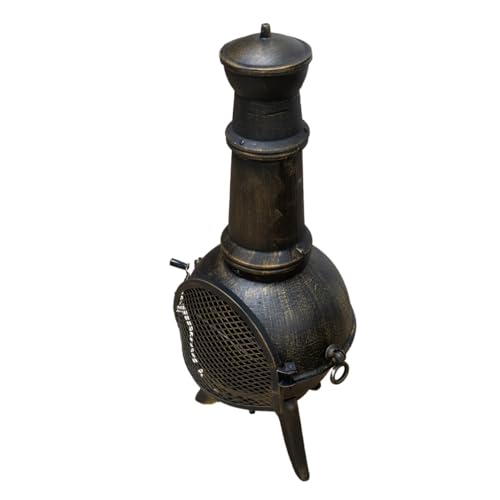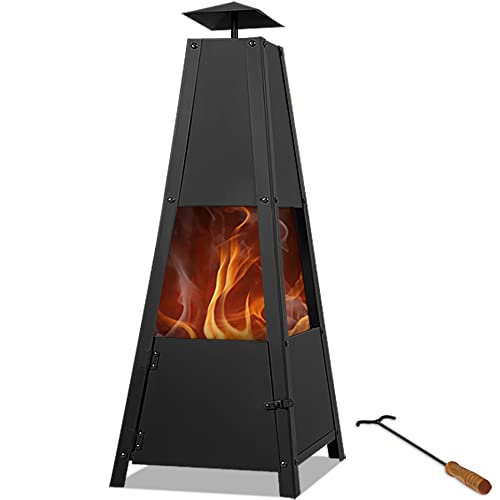지역센타회원 | Five Killer Quora Answers To Chimineas Sale
아이디
패스워드
회사명
담당자번호
업태
종류
주소
전화번호
휴대폰
FAX
홈페이지 주소
 Things You Should Know Before Buying a Chiminea
Things You Should Know Before Buying a ChimineaChimineas can be a wonderful addition to your backyard. They provide warmth and ambiance. But, there are a few things you should know before purchasing one.
 For instance, some Chimineas release toxic particles into the air. To prevent this you can opt for bioethanol-based fuels, such as fire pits. They require regular maintenance.
For instance, some Chimineas release toxic particles into the air. To prevent this you can opt for bioethanol-based fuels, such as fire pits. They require regular maintenance.The History of the Chiminea
Chimineas add warmth and a welcoming light to outdoor living spaces. Chimineas can transform a chilly summer evening into a welcoming space to relax or entertain friends and family. Chimineas were initially constructed from clay and other materials. They have evolved over the centuries to meet a variety of aesthetic and practical requirements.
Chimineas traditionally have an open design with a potbelly as well as a chimney. However, they are also available in more contemporary styles that feature an open design. They usually sit on a base that lifts them off the ground. They also have a large opening to add firewood. Chimineas can be plain or unpainted, while others feature painted, raised or incised particulars.
The earliest chimineas were made from fired clay and were designed for cooking and heating. As these structures became popular they were modified to accommodate different climates. Modernization of design and construction techniques made them more durable. Chimineas today are made of various metals, stones, and clays, each with distinct aesthetic and practical benefits.
Depending on the kind of chimineas you select, they will require regular maintenance to remain in good condition. For instance clay chimineas are prone to cracking and deterioration over time if they are not properly stored in the winter. To protect them, use a protective sealant that is specifically designed for clay. Reapply it every 3-6 months to ensure optimal protection.
Metal chimineas can be damaged however they can also crack when they are not stored properly. To prevent this from happening, keep them in a protected space that protects them from the elements as well as any potential rain or snowfall. To prevent it from falling over, place any chiminea on a stable and level surface. It should never be placed under trees or over any other structures, such as the roof of a patio.
Ultimately, chimineas should be installed permanently in the desired spot and not moved often because they are very heavy and can be difficult to maneuver. However, it is possible to move smaller clay chimineas between different areas of your garden or yard.
Their Function
The first time they were designed as cooking vessels for town-dwelling Mexican tribes These outdoor fireplaces are ideal for creating a cosy ambience. They can also be used as heaters by distributing heat through their chimneys. Besides their aesthetic versatility, they permit them to fit into a variety of design styles.
In addition, chimineas are easy to maintain and manage and maintain, which means they don't require constant cleaning. Additionally, they last for a long period of time if properly maintained and kept away from extreme weather conditions. The quality of the materials used and the maintenance methods employed by homeowners will determine the longevity of these products.
Chimineas are offered in a variety of materials that include traditional clay as well as steel and cast iron each with distinct aesthetics and durability. For instance, the latter are more polished and refined appearance that is suitable for contemporary designs. They also retain the heat very well, which increases their effectiveness as outdoor heaters. Some are also made from eco-friendly materials and offer an alternative to fossil fuels.
The daily impact of chimineas on air quality depends on factors such as the time of use, the kind and moisture content of the wood as well as the effectiveness of the chiminea's design. However, these devices emit particles that can be detrimental to human health and contribute to the pollution of the air and causing climate change. This issue can be lowered by using dry, seasoned wood and a chiminea that is efficient.
Chimineas are enclosed structures that minimise smoke production. They are also designed in a way that smoke is directed upwards, thereby reducing potential health risks and nuisances for neighbours. In contrast, the open design of fire pits could result in a significant amount of smoke which could impact living spaces in the indoor.
In the end, the decision between a chiminea and a fire pit is dependent on your personal preference, functionality and budget. Both are affluent and offer a unique aesthetic. However, chimineas are an excellent option for those looking to create a cozy ambience with little effort. They are also simpler to manage once they've been become warm because of their unique design, making them an ideal alternative to outdoor fireplaces.
Materials
Chimineas are available in various styles that will suit any preference. They typically feature an open-top base that tapers into the shape of a chimney. They are made in either clay, steel or cast iron. They can be incorporated into the design of the deck or patio in your backyard and are extremely practical. They can provide illumination and ambience while providing warmth, which allows you to spend more time outdoors. Chimineas are a great alternative of fire pits, as they are more attractive and better at directing smoke away from those sitting around them.
Chimineas made of clay can be made by hand using raw clay from the locality. The chimineas then are fired to remove any excess material and create an extremely hard surface that is resistant to water. Then they are then coated with an anti-corrosive glaze that decreases the risk of them breaking or warping. A chiminea can be stored all year round, with the exception of extreme weather. If it is stored outside, the clay should be covered and protected with a Chiminea.
If it is made of clay or metal, or cast iron, a chiminea with grill can add an elegant, rustic design to your patio. They are designed to withstand high temperatures, making them ideal for cooking and are available in a variety of sizes. Some even include a removable BBQ.
Be sure to verify whether the chiminea is safe for use and has adequate ventilation before you purchase one. It is crucial to place it on a non-combustible surface, such as a concrete or brick patio, and it is not recommended to place it under any kind of overhang such as a roof or pergola. It is essential not to use water to extinguish the flames, as the sudden temperature fluctuations could crack clay and terracotta.
While chimineas are made to be able to withstand temperatures in the outdoors, they should be slowly built up by beginning with small chiminea fires, and increasing the size of the fire gradually. To avoid rusting and ash accumulation it is a good idea to clean your chiminea frequently with an outdoor wood cleanser.
Environmental Impact
Chimineas are famous for bringing warmth and ambiance to outdoor living spaces, however there is a concern that their use can cause harmful gases. Carbon monoxide is released when wood is burned in chimineas. The gas that is a danger is colorless and smells nothing and can cause respiratory problems and other medical ailments.
This gas is especially dangerous when it is enclosed, such as chimineas for sale, where it can build up to toxic levels. Carbon monoxide poisoning could lead to unconsciousness or death. It can also contribute to global warming and air pollution and is the reason chimineas should be kept outdoors and away anything flammable.
In addition to carbon monoxide, chimneys can release particulate matter and other harmful pollutants. The size of the chimney and the type of fuel used play a role in this, with dry wood fuels producing less emissions than wet logs. A chiminea equipped with a spark-resistor can reduce smoke and PM2.5 emissions.
Although chimineas have developed throughout the years, their quintessential design -an elongated pot-belly and an elongated chimney- remains intact. This balance between design, innovation, and preservation is what makes Chimineas Sale so popular across Europe and all over the world.
Chimineas of today are available in a variety of styles and materials to suit almost any garden design. While clay chimineas remain popular, many choose metal versions that offer enhanced durability and weather resistance. They are constructed in cast iron, cast aluminum and even stainless steel and can be shaped in a range of styles to meet different tastes.
If you're looking for an updated look, there are also slim and more linear designs that won't compromise on functionality. It is crucial to keep in mind that a chiminea made of metal will need more regular maintenance and care than a clay model, since it will be exposed to thermal shock each time you turn it on.
When choosing a chiminea, it is recommended that you read the manufacturer's instructions carefully before starting the fire. It is also an excellent idea to buy an enclosure for your chiminea when not in use to protect it from any water damage or the buildup of dust. It is also essential to clean your chiminea regularly and remove any ash before you start an entirely new fire.




